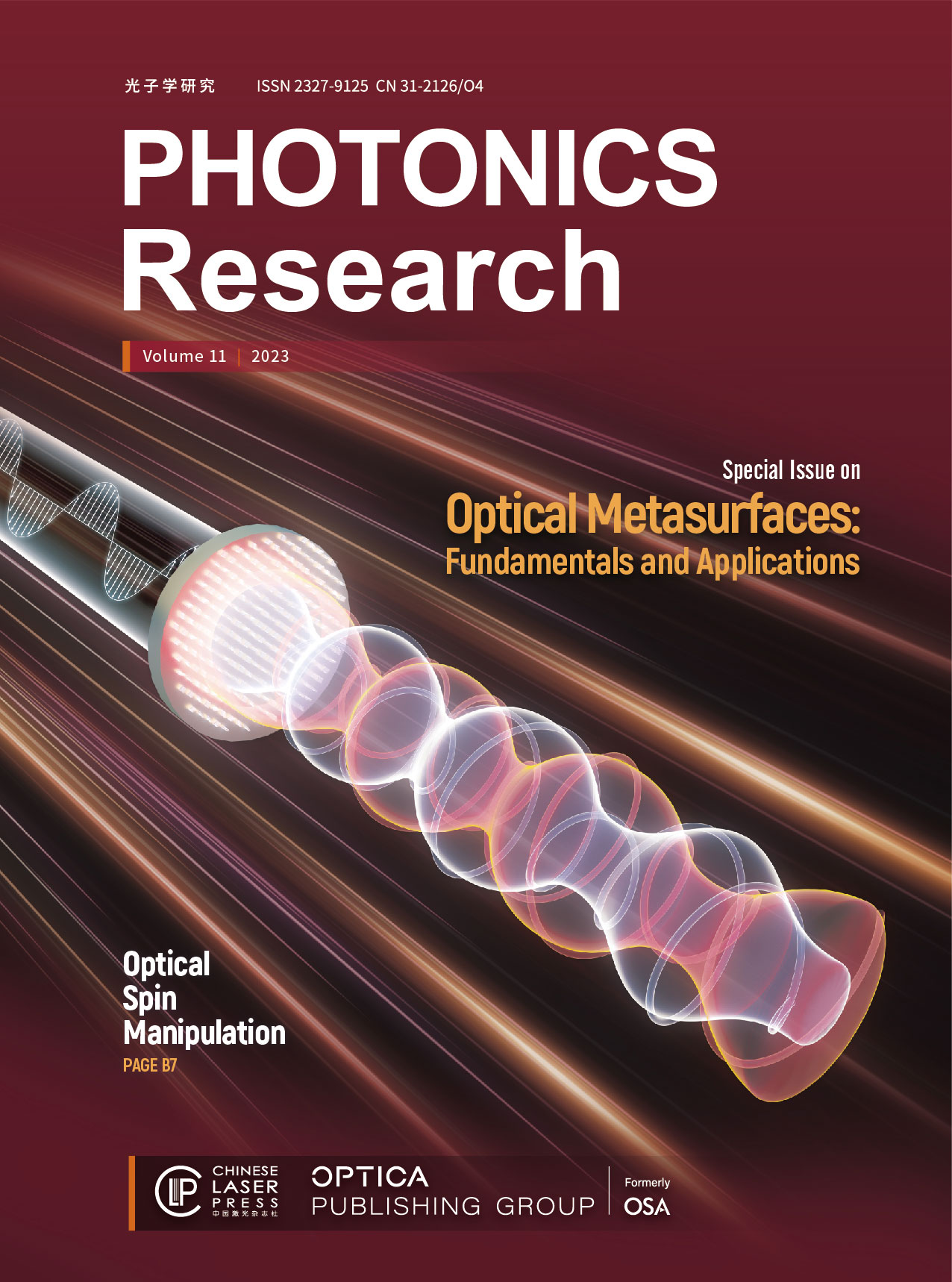Low-modal-crosstalk doped-fiber amplifiers in few-mode-fiber-based systems
IF 7.2
1区 物理与天体物理
Q1 OPTICS
引用次数: 0
Abstract
Independent light propagation through one or multiple modes is commonly considered as a basic demand for mode manipulation in few-mode fiber (FMF)- or multimode fiber (MMF)-based optical systems such as transmission links, optical fiber lasers, or distributed optical fiber sensors. However, the insertion of doped-fiber amplifiers always kills the entire effort by inducing significant modal crosstalk. In this paper, we propose the design of doped-fiber amplifiers in FMF-based systems adopting identical multiple-ring-core (MRC) index profiles for both passive and doped fibers to achieve low modal crosstalk. We develop the direct-glass-transition (DGT) modified chemical vapor deposition (MCVD) processing for precise fabrication of few-mode erbium-doped fibers (FM-EDFs) with MRC profiles of both refractive index and erbium-ion doping distribution. Then, a few-mode erbium-doped-fiber amplifier (FM-EDFA) with a maximum gain of 26.08 dB and differential modal gain (DMG) of 2.3 dB is realized based on fabricated FM-EDF matched with a transmission FMF supporting four linearly polarized (LP) modes. With the insertion of the FM-EDFA, 60 + 60 km simultaneous基于少模光纤系统的低模态串扰掺杂光纤放大器
在基于少模光纤(FMF)或多模光纤(MMF)的光学系统(如传输链路、光纤激光器或分布式光纤传感器)中,通过一种或多种模式进行独立光传播通常被视为模式操控的基本要求。然而,掺杂光纤放大器的插入总是会引起严重的模态串扰,从而使整个工作功亏一篑。在本文中,我们提出在基于 FMF 的系统中设计掺杂光纤放大器,对无源光纤和掺杂光纤采用相同的多环芯(MRC)索引剖面,以实现低模态串扰。我们开发了直接玻璃转换(DGT)改性化学气相沉积(MCVD)工艺,用于精确制造具有折射率和掺铒离子分布 MRC 曲线的少模掺铒光纤(FM-EDF)。然后,基于与支持四个线性偏振(LP)模式的传输 FMF 相匹配的 FM-EDF,实现了最大增益为 26.08 dB、差分模态增益(DMG)为 2.3 dB 的少模掺铒光纤放大器(FM-EDFA)。通过插入 FM-EDFA,成功演示了 60 + 60 千米的 LP01/LP11/LP21/LP02 同步传输,无需模式间多输入多输出数字信号处理(MIMO-DSP)。据我们所知,所提出的低模态串扰掺杂光纤放大器设计为各种应用中的模态操纵方法提供了新的见解。
本文章由计算机程序翻译,如有差异,请以英文原文为准。
求助全文
约1分钟内获得全文
求助全文
来源期刊

Photonics Research
OPTICS-
CiteScore
13.60
自引率
5.30%
发文量
1325
期刊介绍:
Photonics Research is a joint publishing effort of the OSA and Chinese Laser Press.It publishes fundamental and applied research progress in optics and photonics. Topics include, but are not limited to, lasers, LEDs and other light sources; fiber optics and optical communications; imaging, detectors and sensors; novel materials and engineered structures; optical data storage and displays; plasmonics; quantum optics; diffractive optics and guided optics; medical optics and biophotonics; ultraviolet and x-rays; terahertz technology.
 求助内容:
求助内容: 应助结果提醒方式:
应助结果提醒方式:


